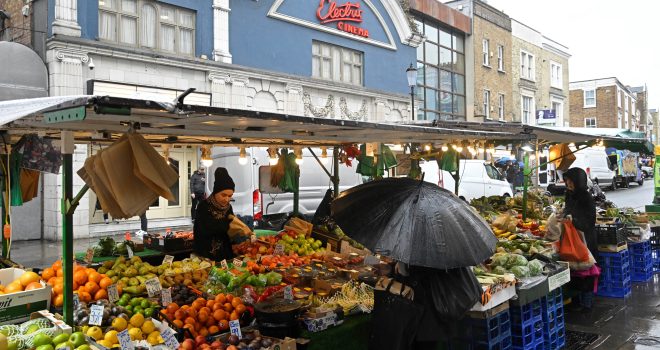Retail Revolution: Adapting For Success To The Post-Pandemic Shopping Mindset

The retail sector has been navigating uncharted waters in recent years, and the need for adaptation has never been more apparent. The aftermath of the COVID-19 pandemic continues to cast a long shadow, leaving many retailers struggling to recover. While some may argue that they are making progress in growing their turnaround, the reality is that the retail industry must undergo significant transformations to remain relevant and thrive in the post-pandemic era.
The retail sector is in the midst of a transformative journey, and to thrive in this ever-evolving landscape, adaptation to the new shopping mindset is crucial. The pandemic has accelerated the change of mentality and shopping habits that were already in the background. However, while shoppers have changed, retailers, both online and offline, are still grappling with the uncertainties of a retail revolution for which they were not prepared.
The pandemic exposed the vulnerabilities of traditional retail models, pushing them to the brink. As consumers adapted to online shopping and safety concerns led to reduced in-store foot traffic, many retailers faced plummeting sales and prolonged periods of fear. While the initial shock of the pandemic has long faded, its impact on consumer behaviour and expectations remains, making it imperative for the retail sector to change, both online and offline.
Traditional retailers with an online presence must recognise the imperative need to modernise their ecommerce platforms. The days of a basic, clunky website are long gone. Today’s consumers expect sleek, user-friendly interfaces that mirror the in-store shopping experience. Modern ecommerce platforms should offer intuitive navigation, visually appealing and easy to use product displays, and efficient checkout processes. It’s time for retailers to move their online platform to the next level. Templated structures are slowing down progress, and those who can switch to open source and adaptable Magento development rather than using a turnkey site are more likely to see positive results.
Consumers have grown accustomed to the convenience of online shopping, and they now expect traditional retailers to meet their digital expectations. By investing in a contemporary ecommerce platform, retailers can make it easier to browse, shop, and make purchases online in 2023.
One of the most critical aspects that must change is the way retailers view and interact with technology. The pandemic accelerated the shift towards modern ecommerce, and this trend is here to stay. Robust online platforms, seamless user experiences, and quality content are a must to meet the growing demand for online shopping, Moreover in the digital age, technology is a retailer’s best friend.
Artificial Intelligence (AI) is a game-changer when it comes to enhancing the shopper’s experience. Retailers now need to implement AI-powered solutions on their websites to offer personalised recommendations, intelligence chatbots that address queries and provide guidance, and tailored content that speaks directly to individual preferences.
AI can not only simplify the shopping process for customers by understanding their preferences and habits, but it can also streamline the entire journey from discovery to purchase. This serves a dual purpose for retailers, both as a way to enhance the online shopping experience and a strategy designed to boost customer loyalty.
Another important lesson from the pandemic is that physical stores can no longer operate as isolated entities. They must become integrated components of a broader omnichannel strategy. Retailers should create synergy between their online and offline offerings, allowing customers to seamlessly transition between the two. This approach not only enhances convenience but also provides valuable data insights that can inform decision-making.
While the digital realm remains an essential factor in the shopping and decision-making experience, physical stores can still be relevant if they learn to adapt. Retailers need to find compelling reasons to bring people back into brick-and-mortar locations. This can include hosting special events, incorporating unmissable features, offering exclusive discounts for in-store shoppers, and even providing a personal shopping assistant experience that adds value to the visit.
Ultimately, enhancing the offline experience is vital as it creates memorable moments that cannot be replicated online. Retailers who successfully blend the convenience of ecommerce with the richness of in-store experiences will continue to attract and retain their post-pandemic customers.
Additionally, a major part of a positive experience is the ability to purchase and enjoy the goods asap after purchase. Retailers need to reevaluate their supply chain and inventory management systems. The pandemic exposed the fragility of global supply chains, leading to disruptions in the availability of goods.
Retailers can’t afford to skip valuable transformations, such as adopting agile inventory management practices and investing in automation to improve efficiency and resilience in the warehouse.
As people live in an area of immediate disponibility, the online retail arena needs to level up to the fierce competition against giants such as Amazon that can offer same-day or next-day delivery. Logistics is the centrepiece of modern retail, and ecommerces need to up their game accordingly. This includes improving their delivery systems, optimising routes, and ensuring timely and accurate order fulfilment. Logistics challenges are not reserved for the warehouse only.
The rise of Quick Commerce, Q commerce for short, has set new benchmarks for speed and efficiency in delivery. Retailers can learn from this trend to meet customers’ ever-increasing expectations for fast, reliable shipping. It makes no doubt that implementing innovative delivery solutions and partnerships can make all the difference.
Lastly, in 2023, social media has become an indispensable tool, not just for retailers but for all interactions with businesses. It offers a direct line of communication with customers and provides a platform to showcase products and brand values. An engaging social media presence involves a lot more than just promoting products. It revolves around telling a compelling story that resonates with followers.
Influencer marketing is also a powerful social media strategy that can help retailers connect with new audiences and drive interest in their products or locations. Nowadays, as the influencer market is diversifying, there’s nothing stopping small retailers from collaborating with micro and nano influencers to expand their reach and build trust with consumers.
In conclusion, the retail sector is at a pivotal juncture, demanding adapting and innovation. The aftermath of the pandemic has accelerated changes in consumer behaviour and expectations, making it imperative for retail;ers to embrace modern strategies, technologies, and customer experiences.




